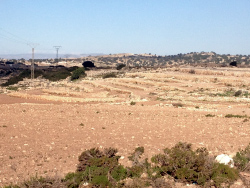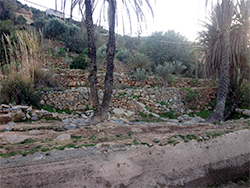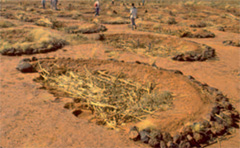SLM practices
Sustainable land management (SLM) comprises measures and practices adapted to biophysical and socio-economic conditions aimed at the protection, conservation and sustainable use of resources (soil, water and biodiversity) and the restoration of degraded natural resources and their ecosystem functions.

Land resource planning – the systematic assessment of land potential – is needed to help land users select, adapt and put SLM options (biological, agronomic and structural) into practice in an integrated way in a given farm or wider landscape with the aim of maintaining productivity and restoring degraded land.
The selection of appropriate SLM practices and approaches is an important step in ensuring the effectiveness of land management and restoration. A common question is: for a certain set of biophysical and socio-economic conditions, what optimum technologies or practices can farmers and other land users introduce to prevent degradation or restore degraded land? Reliable information is required to answer this question effectively, and sources of such information include:
- World Overview of Conservation Approaches and Technologies (WOCAT)
- Technologies and practices for small agricultural producers (TECA)
- Climate-smart agriculture sourcebook
- Sustainable forest management toolbox
- Mountain and watershed management
There is considerable accumulated experience on SLM practices, many of which have been tested and fine-tuned to produce packages of best practices for the sustainable management of land and water. Adoption of such technologies by farmers is slow, however, and FAO aims to speed it up by, among other things, supporting countries to provide an enabling environment and promoting tools to ensure the selection of the most suitable techniques and technologies for a given set of biophysical and socio-economic conditions.
 Similarity analyses are used to match areas of interest with areas where farmers have tested, fine-tuned and implemented SLM technologies and where water and land management packages might be applied. Professionals, planners and decision-makers can use the information and products generated from these analyses to identify the most suitable SLM practices and technologies for targeted areas and communities.
Similarity analyses are used to match areas of interest with areas where farmers have tested, fine-tuned and implemented SLM technologies and where water and land management packages might be applied. Professionals, planners and decision-makers can use the information and products generated from these analyses to identify the most suitable SLM practices and technologies for targeted areas and communities.
To foster the uptake and adoption of SLM, FAO is promoting a holistic process that includes providing technical options suitable for different conditions while also enhancing the socio-economic environment, managing barriers to change, and supporting policies and institutions that will ensure successful scaling up.
SLM includes practices to:
- prevent land conversion and protect vulnerable lands;
- prevent and mitigate land degradation and restore degraded soils;
- control soil erosion;
- improve soil-water storage;
- manage soil organic matter for soil carbon sequestration;
- manage and enhance soil fertility;
- promote integrated soil–crop–water management and integrated agroforestry and agrosilvopastoral systems;
- rehabilitate and sustainably manage dryland environments (e.g. managing grazing and livestock; rainwater harvesting; sand-dune reclamation; oasis management; drought management; and precision agriculture); and
- improve crop–water productivity and manage soil salinity in irrigated dryland agriculture.
FAO contributes to many successful multipartner SLM-related processes in Africa, Asia, Latin America and the Caribbean, and the Near East. SLM practices promoted in various countries and regions are documented in the following initiatives and projects to support the scaling up of SLM:
Completed
- Land Degradation Assessment (LADA)
- Transboundary Agro-ecosystem Management Project for the Kagera River Basin
Ongoing
- Decision Support for Mainstreaming and Scaling Up SLM
- TerrAfrica platform for regional sustainable land and water management in sub-Saharan Africa
 Planned to start full-sized projects in 2017
Planned to start full-sized projects in 2017
- Integrated natural resources management in drought-prone and salt-affected agricultural production landscapes in Central Asia and Turkey (CACILM 2)
- IAP food security Burundi and Uganda
